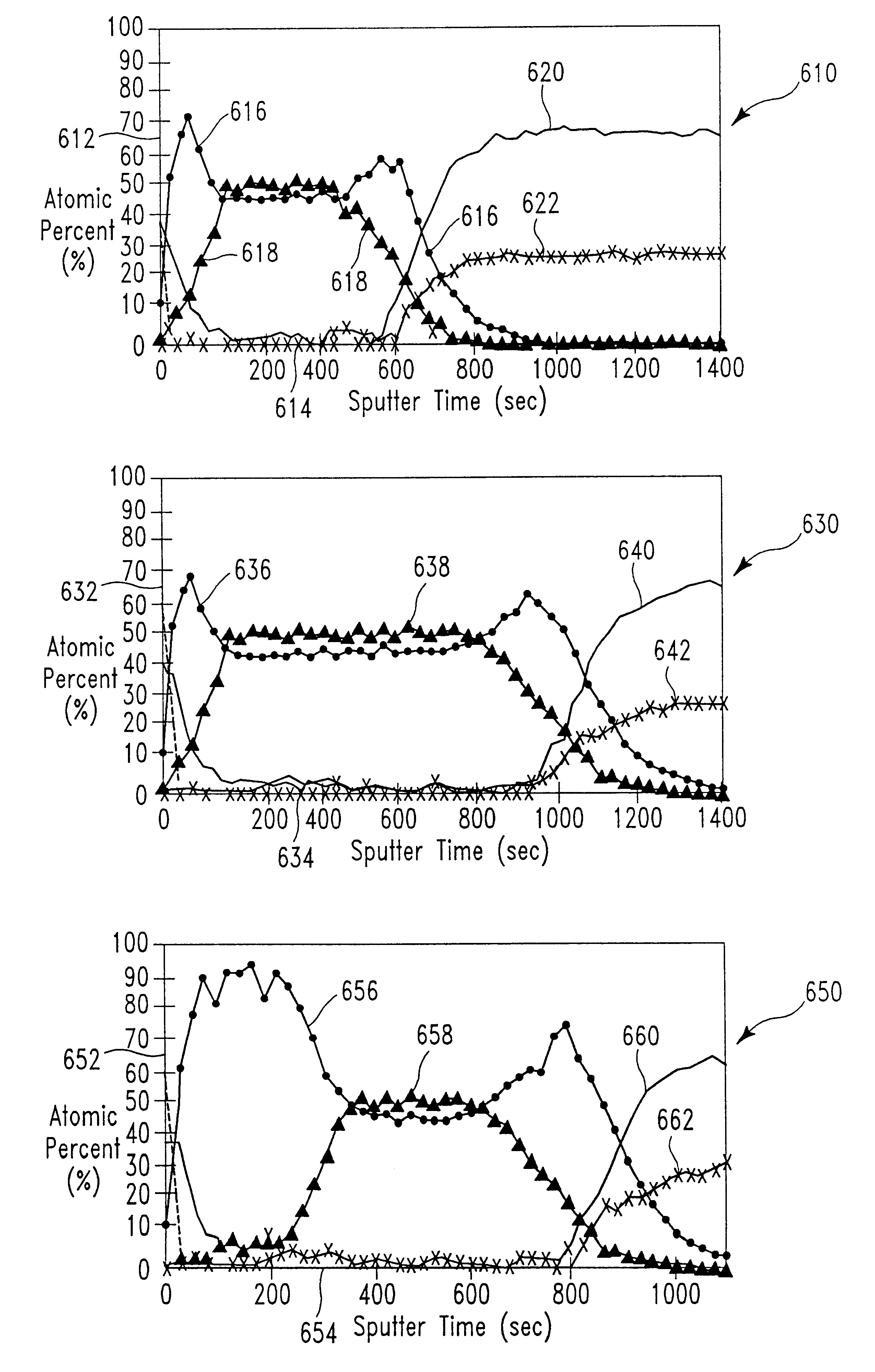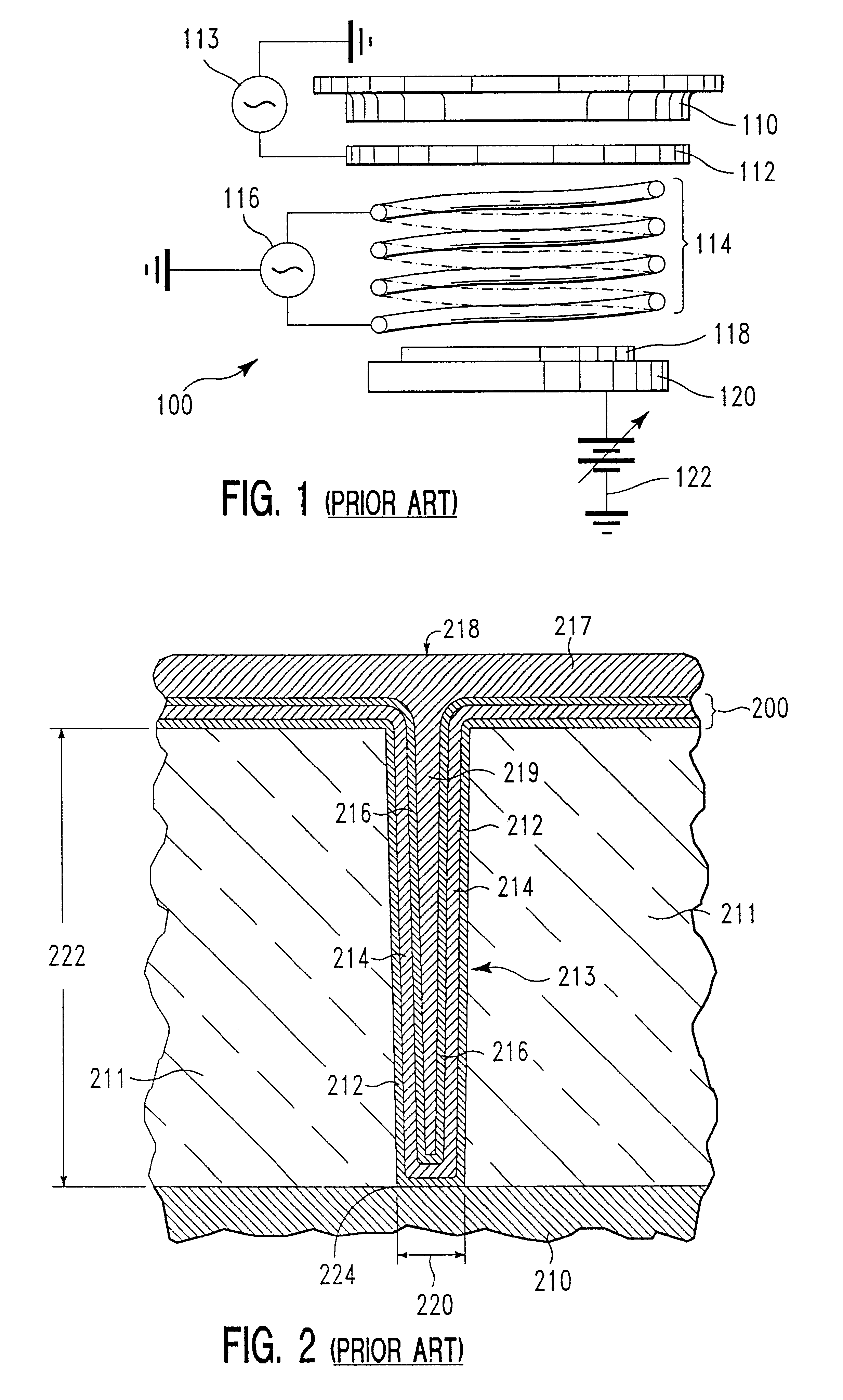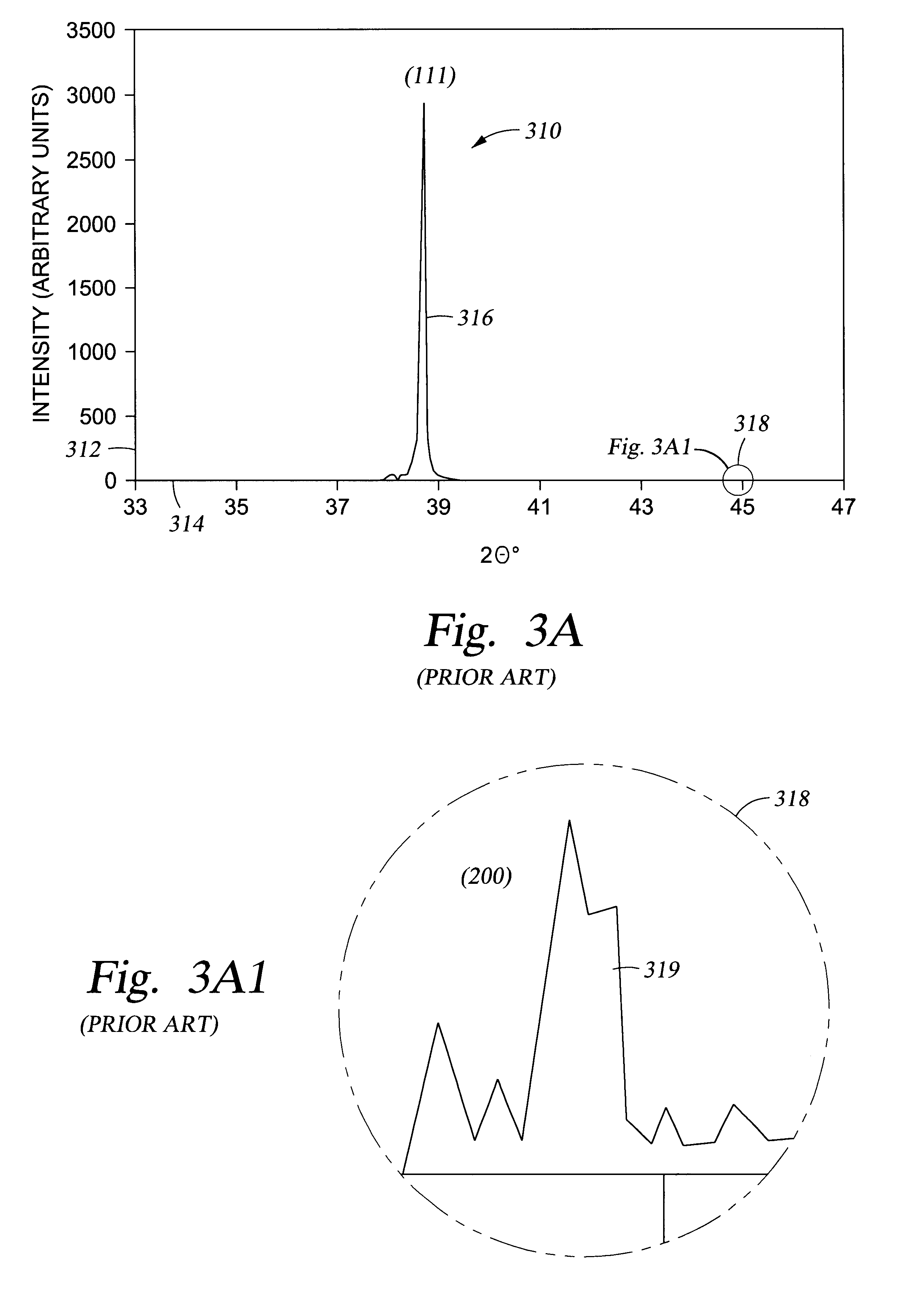Ti/Tinx underlayer which enables a highly <111> oriented aluminum interconnect
a technology of aluminum interconnects and underlayers, which is applied in the direction of electrical equipment, semiconductor devices, and semiconductor/solid-state device details, etc., can solve the problems of poor electromigration resistance of polycrystalline aluminum, affecting the conductivity of contacts, and affecting the electromigration of aluminum atoms within the aluminum layer
- Summary
- Abstract
- Description
- Claims
- Application Information
AI Technical Summary
Problems solved by technology
Method used
Image
Examples
example two
To obtain an aluminum fill of the via where the crystallographic content was sufficiently high to prevent electromigration, the structure of the Ti / TiN / TiN.sub.x barrier layer 200 was adjusted as follows.
The thickness of the first layer 212 of ion-deposition sputtered Ti was about 300 .ANG.; the thickness of the second layer 214 of reactive ion-deposition sputtered TiN was about 250 .ANG.; and the thickness of the third layer 216 of reactive ion-deposition sputtered TiN.sub.x was about 250 .ANG.. The composition of the TiN.sub.x layer 216 ranged from 50 atomic % Ti initially to toward about 100 atomic % Ti toward the surface of layer 216.
Aluminum was sputtered over the surface of via 213 using traditional sputtering, at a temperature of about 400.degree. C. and at a pressure of about 2 mT.
The crystallographic content of the aluminum fill was about 100% (no 200 was observed on the XRD curve). Further, the reflectivity of the aluminum surface was about 199%.
With reference to FIGS. 3...
example three
The description which follows pertains to the fabrication of a Ti / TiN / TiN.sub.x barrier layer over the surface of a 0.25.mu. feature size via having an aspect ratio of about 5:1.
With reference to FIG. 2, the via was created by dry etching through the silicon dioxide layer 211 to silicon base 210. Structure 200 comprised three layers: Ti / TiN / TiN.sub.x. The first layer of Ti was ion-deposition sputtered (IMP sputtered) upon the surface of both silicon dioxide layer 211 and silicon base 210; a second layer of reactive ion-deposition sputtered (reactive IMP sputtered) TiN layer 214 was deposited overlying first titanium layer 212; and a third ion-deposition sputtered TiN.sub.x layer 216 was deposited overlying titanium nitride layer 214. (Upon ion-sputtering of titanium layer 212, a thin layer of titanium silicide 224 is typically formed at the bottom of via 213 upon high temperature annealing). Structure 200 was then filled with a conductive layer 219.
To obtain an ion-deposition sputte...
PUM
| Property | Measurement | Unit |
|---|---|---|
| thickness | aaaaa | aaaaa |
| thickness | aaaaa | aaaaa |
| thickness | aaaaa | aaaaa |
Abstract
Description
Claims
Application Information
 Login to View More
Login to View More - R&D
- Intellectual Property
- Life Sciences
- Materials
- Tech Scout
- Unparalleled Data Quality
- Higher Quality Content
- 60% Fewer Hallucinations
Browse by: Latest US Patents, China's latest patents, Technical Efficacy Thesaurus, Application Domain, Technology Topic, Popular Technical Reports.
© 2025 PatSnap. All rights reserved.Legal|Privacy policy|Modern Slavery Act Transparency Statement|Sitemap|About US| Contact US: help@patsnap.com



